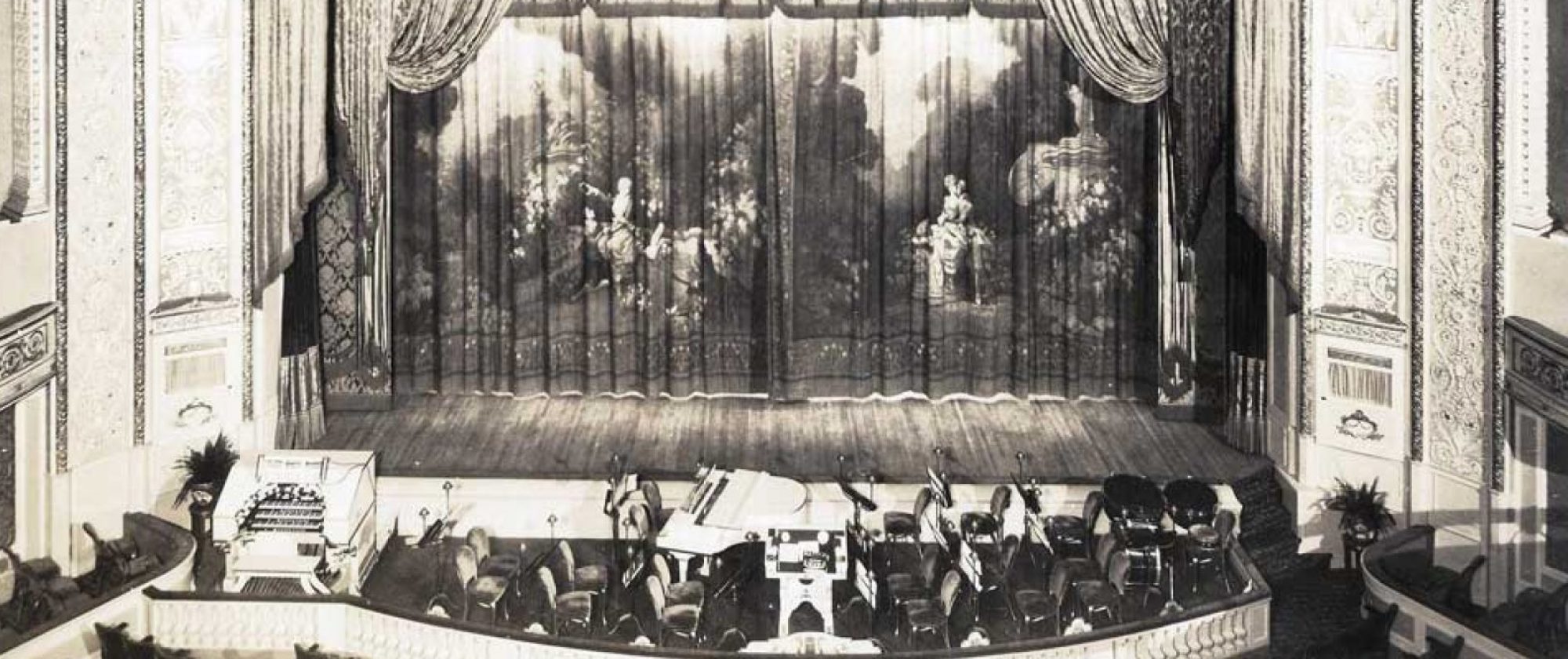23 Mins.; Three (Special Set). Five people in the act, the two comedians in blackface. Of the other three members, one is a man, who is the interlocutor, and two women, in white face (names unmentioned on the program). The scene is a dining car. As the act opens and closes, a panoramic effect is worked and may be seen through the car windows, indicating passing landscape. Two blackface men explain as their reason for being there that they are stranded minstrels working their way back to St. Louis as waiters. The remainder of the group are described as a part of touring minstrel show. The interlocutor is the manager, and he needs two end men. Then they get down to business, which is singing, dancing and telling jokes. The latter are not bad at all; the comedy by the two men is neither forced nor overdone; the singing seemed to be very well liked, particularly that by the trio of men (when the audience howled for more); the women get into the action with one solo and one duet, and the act passed along to a very good reception Tuesday night on the Roof. It could be speeded up; 23 minutes means a long time; but there’s no question that the roof audience liked this turn. It was down second from closing. Some electrical effects are used for lighting purposes, and the main scheme of presentation removes it from the stereotyped semi-circle.
“Hogan in London” 17 Mins.; Five (Parlor). Another of the “Hogan” series Bert Leslie has made popular in vaudeville. His frame and that of the “Hogan” sketches has come through the slang Mr. Leslie uses, new slang each time with many twists, some of it very bright and nearly all good for a laugh. In this latest number, written by Frank J. McGettingan and Mr. Leslie, the talk is the best “Hogan” has had in the slangy style. Little of it is forced, nearly all has good points and several lines brought real screams. The scene is set in a London home where Leslie goes as a painter from New York to receive $10,000, his share of a fortune left by an uncle. A company of three, two men and a woman, does nicely, the cabman (Legai Robinson) especially well taking care of the character, in action and make-up. The support as usual act only as freeders to Mr. Leslie. The finish could stand a little strengthening but the act is there easily. A line on the Hammerstein program, referring to Mr. Leslie says: “A Cody of None – Copied by Many.” That is true.
Murray and Voelk, with the short comedian of the two owing a very pleasing singing voice. That voice will hold the turn on the big time in a spot, although the comedian-owner of it knows hot to bring out the giggles.
Robert Emmet Keane is toplining and looking after his laurels in great shape. His routine is the same flock of sure fire stories with the nut song preceding and the war poems concluding as of yore.
Then Joe Laurie Jr. came along and scored. This chap has a wonderful delivery for the material that he writes for laughs and he does manage to keep the audience howling. His “mother and father” plants are corkers, they are somewhat ahead of the unusual vaudeville plant pulled for a laugh and their legitimate appearance lends all the more to the desired result.
Lane and Harper gave the principal big time touch to the show. The man is a good looking comedian and warbler, very dark of hair. The girl is an auburn-locked Fifth avenue beauty with a figure that they seemed to appreciate in the stockyards district through they don’t see many like it among the husky damsels thereabouts. She is built like a thoroughbred, and frank discussion of her physical lines is justified because no one could be much more frank in dealing with it than herself. They open with a manicure but at an illuminated table, in a special setting that bespeaks the same class that the whole turn typifies. The material thereafter rambles and what they get out of it is all their own, not owing to any assistance from it. They took the house early.
Palo and Palet, with nearly ever known musical instrument and a few of their own invention, elided the deuce period as best. This pair were formerly known as Gallerini and Son. Now they work in clown but use the same run.
Earl and Edwards closing the vaudeville. The two men got big returns with talk, gags and comedy business in which two ukuleles are employed, and one of the men working in the audience during the greater part of the routine. Much familiar dialog and business employed including that of repeating gags to late arrivals. They had ‘em laughing throughout with their semi-nutty routine, which they handle quit cleverly.
Bert Melrose had the women folk in the audience shrieking with his antics prior to the time that he started tipping the tables, and when he arrived at that portion of his act it looked as though a couple of them would pass out of the picture.
Barton and Sparling (New Acts) took the show up to its highest velocity though being on a little early at that. The comedian was responsible, mostly through his voice and the ability to put over a song. The boys could have done more but doused the lights after one encore.
